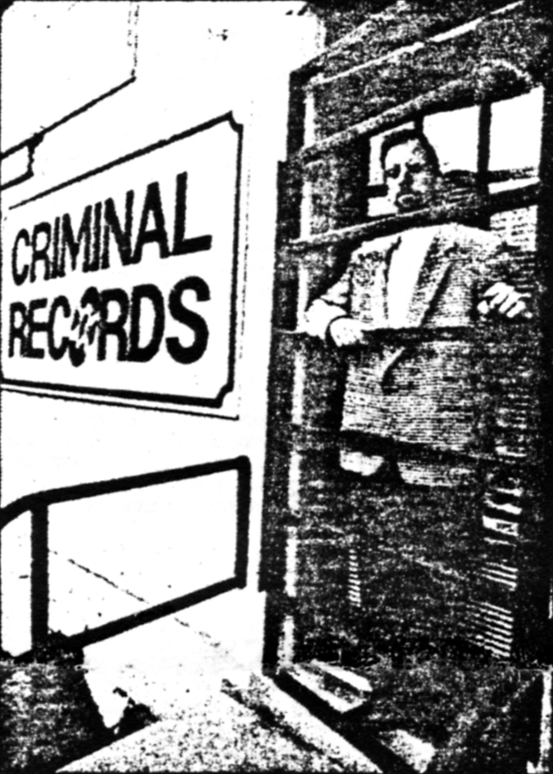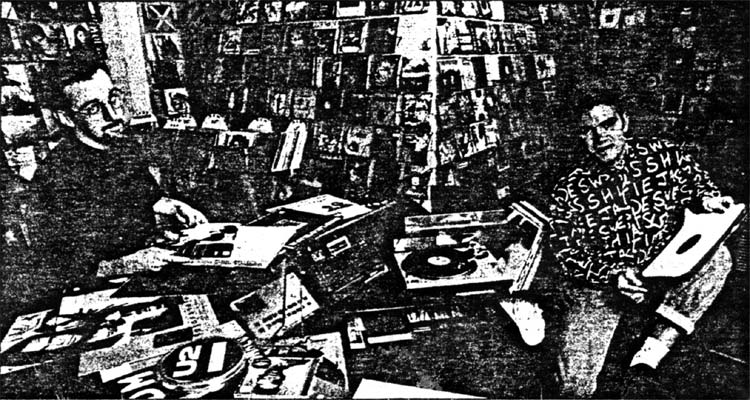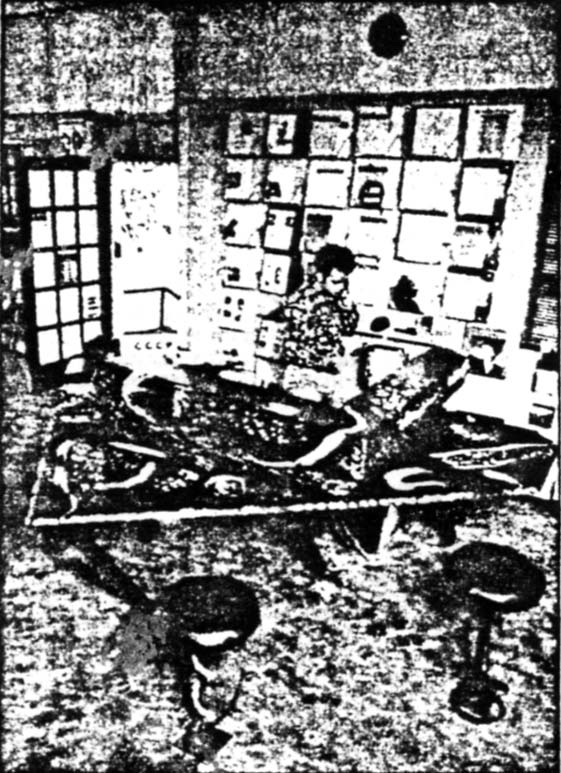Grand
Slammer

STAFF WRITER
The location is an unlikely one, the decor is custom-made and the music is downright amazing.
A faux turquoise-and-black marble floor – suitable for dancing – lies underfoot; it is broken up by two one-of-a-kind metal sculptures and a bar that is a work of art in itself.
It is broken up by two one-of-a-kind metal sculptures and a bar that is a work of art in itself.
We know what you’re thinking. No, we’re not writing about a new nightclub, though the proprietors brew a mean cup of coffee. Guess again.
Two turntables and an audio board rest where the glassware and sinks should be, and the wall behind the bar is lined with record racks filled with custom-mixed dance tracks.
Give up?
Welcome to Criminal Records, a unique record store where you’ll find the meanest house, sleaze and high-energy music this side of New York City.
House music? Sleaze?
Yes, the folks at Criminal, located at 1700 E. First St., realize the unique lingo may be lost on record buyers weaned on Janet Jackson, Tone Loc and The Sound of Philadelphia. And that’s exactly why the operators decided it was high time to introduce to Dayton the dance music sound found in clubs from London to Los Angeles.
“I came to Dayton and couldn’t find anything like this.” said John Bard, who opened the store in November.
Bard soon started putting together the financing for the project and began renovating the warehouse-style building where the store is now housed. Then he brought in Todd Robinson, a former store manager with Gem City Records, to help with merchandising.
The result is a local store with a national sales base, thanks to advertising in several dance music specialty publications and a toll-free order hotline.
‘We average about 10-15 orders per week from around the country,” Bard said. But their work is cut out for them when it comes to generating sales from Dayton-area residents.
The local dance music scene is still firmly rooted in the Top 40, so club disc jockeys have a tendency to stick with safe, well-known tunes that have become popular on radio — and which they know wilt generate audience response.
Yet even that is beginning to change, according to Bard and Robinson.
“The people here are very hip,” Bard said, “They know what’s going on but there’s no outlet for this type of music. The clubs can bring in some of these groups but they stick with the vanilla — they stick with the mainstream.”
Robinson believes the clubs will change if their audiences demand it. “A year ago if you played some import music here, people would be on the dance floor scratching their heads,” Robinson said. “Now people are hearing the stuff and they’re asking their DJ’s for it.”
Artists are changing, too. A recent visit to Criminal turned up new releases from Mary Wilson and Martha Reeves and the Vandellas, both performing old Motown classics that have been updated for younger audiences.
Even the late Louis Armstrong has been dragged — probably kicking and screaming, no doubt — into the mix with a 12-inch single dubbed Scratchmo.
The producer used digital sampling techniques to transport Armstrong’s classic trumpet sound to the dance floor. Some purists see sampling as desecrating older, more enduring music, but Robinson doesn’t see it that way.
Local record store hopes to lock up music market with flamboyant approach

“There are a lot of 25- or 26-year-old music buyers and younger who haven’t been exposed to Louis Armstrong,” he said. “This is a fun way to do it.”
Bard hosts a weekly Sunday sight radio show on WYSO-FM (91.3) to showcase new dance tracks.
The pair likes to refer to their trade as an educational mission — ‘it’s one thing to sell the music, but if the buyer is unhappy after plunking down his or her hard-earned cash for new records or compact discs, they’ve lost any hope of repeat business.
As a result, you won’t find anything here that’s been shrink-wrapped for your protection. The “record bar” has a purpose.
“It can be overwhelming,” Robinson said “You walk in and don’t see anything familiar, so we’ll play albums for you. We want people to come in and be comfortable. Sit down, have something to drink and listen to the music.”
That’s a good idea, a lot of customers end up being worn out by the trip, since finding the store is a challenge in itself. Criminal Records is nestled in the middle of an industrial district, just east of Patterson Iron & Metal on East First Street.
“People are surprised that something like this exists is this location,” Robinson said. “But once people come in they seem to come right back.
“For me it’s a real big thrill to turn somebody onto some new music that they’ve never heard before. It’s a lot of fun to educate people.”

Here’s a guide to the terms used with today’s dance music
- DOR:
- Dance Oriented Rock. You’ll find a bit of European flavor on these more popular tunes from groups like Depeche Mode, Skinny Puppy, Front 242 and CCCP.
- HINRG:
- Or high-energy, is more streamlined, up-tempo dance. Think about it as updated disco without the polyester suits, feathered haircuts and sequins. It’s a sleek sound from artists including Jason Donovan, Paula Evans and Akasa.
- HOUSE:
- described as urban techno-dance music, first popularized in New York City. Most tracks are mid-tempo selections using repetitive rhythms and electronically sampled instruments. Top house groups include Maurice, Adeva, Jamie Principle and Inner City.
- NEW BEAT:
- sometimes called dark house, comes from Europe, or more specifically, Belgium, where they refer to it as “industrial dance” music. Look for the Lords of Acid, Rhythem Device, Amnesia and Zsa Zsa Laboom.
- SLEAZE:
- actually something your mom might like. New York clubs – which often stay open until 7 or 8 a.m., use sleaze tracks to slow things down after a long night of frenzied dance-floor action. No filth here, folks, just slower, more hypnotic grooves from artists including Blue Nile, Dolla Morandi, Radio Movie and Nitribit.